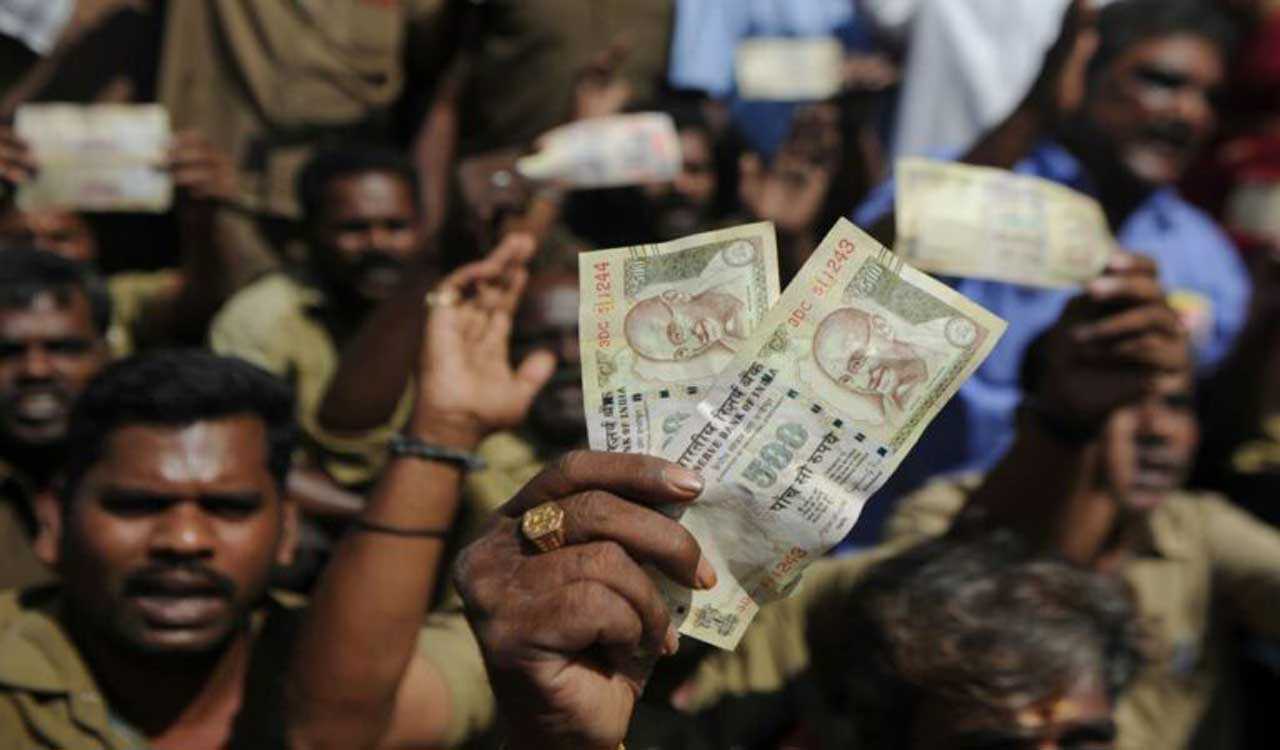In an initial boost to the PM’s idea and a validation of sorts to his announcement demonetisation, the Reserve bank of India soon announced that 98 per cent of the scrapped notes were returned to the banking system.
Published Date – 07:22 PM, Wed – 8 November 23

Hyderabad: Seven years ago, on November 8, 2016, Prime Minister Narendra Modi appeared on national television and announced the scrapping of the old Rs. 500 and Rs. 1000 denominations, which at that time were 86% of the notes that were in circulation by value.
“Reliance on cash in the economy needs to be reduced, Mitron…“ announced the PM, sending millions of Indians straight to queue up in front of banks and ATMs to deposit the old notes or get them exchanged for the new and colourful Rs. 500 and Rs. 2,000 notes.
Although with a start-stop kick off, merchants, right from those selling vegetables to those selling jewellery, started accepting payments in UPI mode, marking a bright beginning for a new way of financial transactions in India.
In an initial boost to the PM’s idea and a validation of sorts to his announcement of scrapping old notes and introducing new ones, the Reserve bank of India soon announced that 98 per cent of the demonetised notes were returned to the banking system.
However, little did Indians know at that time that their efforts to get hands on the brand new notes would be a boondoggle as the Reserve Bank of India announced its decision to withdraw the Rs. 2000 notes from the circulation in 2023, seven years after introducing them. Again, 97 percent of all the Rs. 2000 notes have been returned to the banking system by October 31, announced the RBI.
All that said, “Has the cash in circulation reduced after all?” remains the top question one might ask while discussing demonetisation.
Has cash in circulation in the Indian economy reduced?
The answer to that question is a “no,” according to a recent survey conducted by LocalCircles, a community social media platform.
In a report released on the eve of the seventh anniversary of demonetisation, LocalCircles has revealed that cash circulation in the Indian economy has almost doubled from Rs. 17 lakh cr in 2016 at the time of demonetisation to Rs. 33 lakh crore in October, 2023.
The report also states that 76 per cent of those who have purchased property in the last 7 years, had to pay a component of the price in cash. While 15% percent of the respondents paid over 50 percent of the property’s value in cash, 18% of them paid 30-50 percent of the value in cash. A high 28% of the respondents paid 10-30 percent of the property’s value in cash, according to the report.
However, the report also states that 24% of the respondents were able to complete the transaction without paying any part in cash.
The report also suggests that a fraction more than a fourth of those surveyed, stated that they still use cash for most of their monthly household purchases without a receipt or a bill.
Close to 56% of the respondents polled said that around 5 to 25 percent of their monthly household purchases were in cash without a receipt and 15% of them said that they did not use any cash for similar purchases.
Salaries paid to personal services, domestic help and travel were among the top payment categories for cash payments, found the survey.
While the number of UPI transactions in the country have grown exponentially, seven years after the drastic step of demonetisation, the circulation of cash in the Indian economy has not seen a decline, but it grew almost twice as much since the withdrawal of the old notes.



